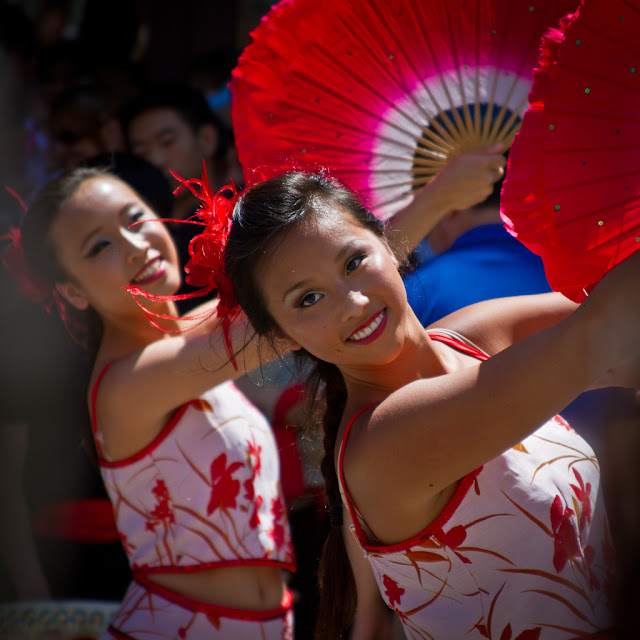Touted as the largest free folk festival in the United States, the Lowell Music Festival hosts folk music and a rich variety of street vendors selling multi-national food and crafts over the last weekend of July every year.
This was the 25th anniversary of the first festival and my third visit since we arrived in Massachusetts in 2001.
It is a great opportunity to experiment with performance photography. There are 6 stages and street performances so if you can get near the front you can photograph to your heart's content.
This year, following a tip from a friend who has been attending for years, we arrive mid-morning and set up chairs in a shady spot on the Boarding House Park lawn. From there you can take excursions to the street vendors for food, or walk around and look at street performers.
A selection of scenes from the Festival from tbouwer on Vimeo.
There is a chance as the crowds grow in the afternoon, that your space will be invaded. People don't quite disassemble your chairs, but they will sit right in front of them until you get back and politely ask them to move. An old couple sitting in front of us nearly had a stand-up fight with some people who took over their towel while they were off looking for food.
The city of Lowell was a powerhouse of the textile industry in the 19th Century and is referred to as the cradle of the industrial revolution in America because it was one of the first industrial towns in the USA. Ironically, the textile industry's move to the South and the eventual decline of these towns in the North was made possible by the advent of steam powered motors which replaced the water-powered mill in the South where there were fewer rivers and cheaper labor.
Lowell has recovered somewhat from the steep decline over the loss of textiles in the early 20th Century and has a great feel with the large brick buildings that once supported the industry.
The center of the city, almost encircled by the canals that drove the mills, is where the festival takes place.
This year we spent most of our time at the Boarding House Park stage. The main artists make a circuit of the stages and we watched several really impressive acts.
First up were the Birmingham 6-man Quartet. A four part harmony gospel quartet from Birmingham. They were incredibly energetic - led by their music director James Alex Taylor, with his brothers and one nephew, along with two other singers. A few very versatile vocalists!
I took a break from the performance to walk around the streets and visit a trolley museum. Lowell operates some restored trolleys on a 1.2mile track that has been electrified for tourism.
There are street vendors plying their crafts and selling their art along many of the streets along the canal and in the city.
I arrived back in time to see an Argentinian group called "Hector del Curto's Tango Quartet". He plays an accordion instrument called a bandoneon and they had an enchanting cellist and energetic bass and piano accompaniment. Two dancers also gave a very taught and energetic performance of the Tango on stage.
The show went live on public radio with the next performance, an Irish group called Dervish. They sang and played beautiful melodies. Their lead singer, Cathy Jordan has a beautiful voice.
Another break from the performance while the Quebe Sisters were singing and a visit back to the street vendors.
We stopped to watch a street performance of Chinese dance
and then back to the show for Shemekia Copeland, a renowned Blues singer with a powerful voice and a big stage presence. Her show was a great way to end the day.
The festival is over two days, starting at noon each day and going into the night. We had friends to visit in the evening so left before the night performances.
-











No comments:
Post a Comment